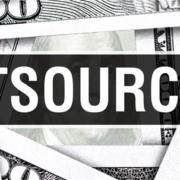Here’s how much your IT should actually cost your business
Your business relies on lots of technology to keep running smoothly. There’s a good chance you’ve got an IT budget of sorts that dictates how much you can spend on acquiring and maintaining it, too.
But what if you’re spending way more than you need to?
Even worse, what if you’re not spending enough?
You’re not the first businesses to ever wonder. That’s why we’ve built this easy little guide that can show you how to calculate exactly how much you need to spend on IT.
What are others spending on IT services?
According to a study from the advisory giant Deloitte, most organizations spend 3.28% of their total revenue on some form of IT.
Companies within the financial space, such as banks, spend the most at 7.16%. That’s largely due to the fact that they have lots of regulations to follow, and a single breach of their data could cause them to shut their business down.
Conversely, four industries came in at below the average for IT spending. They were:
- Energy and resources (2.50%)
- Consumer business and retail (2.04%)
- Manufacturing (1.95%)
- Construction (1.51%)
Despite them being below industry average, they’re undergoing a digital transformation. Across nearly all industries, IT spending increased across the board.
It’s not surprising when you consider modern reliance on better hardware and software platforms.
It’s critical to understand what’s covered in the IT budget. Start by getting your budget to cover what matters most to your business. If you’re looking for additional help in getting a budget set up, you can always get an IT consultant to help you out.
Otherwise, here’s how to get your budget straightened out.
1. Create a budget in the first place
Obviously, it’s hard to track and measure your IT spend if you don’t have a budget. TechRepublic offers a helpful, no-nonsense guide on how to build and maintain a budget.
2. Get strategic with your spend
Spending more on IT isn’t necessarily the same thing as spending strategically. Though they’re often overlapping, you’ll want to consider what upgrades give you the biggest bang for the buck.
You can break down expenses into two categories: want and need. Here’s an example – say your dental practice relies on a local server to host patient data. It’s probably a good idea to improve the security of that server (need) before you go spending money on a faster PC for the office manager (want).
Forbes has a great article about Equifax that highlights what can happen when you skimp out on security. Here’s a spoiler – it doesn’t end well. They had over 23 class action lawsuits for their infamous data breach.
3. Change your mindset about IT
Back in the day, technology was a ugly pain that companies had to simply deal with.
Modern technology has gotten to the point where it can be a pleasure to deal with – think about every seamless conference room experience or collaborative file sharing platform.
When you change your mindset from IT as an expense to IT as an investment, it can make your company happier and more productive.
Interested in more content? Check out our article on the business value of IT consulting.











